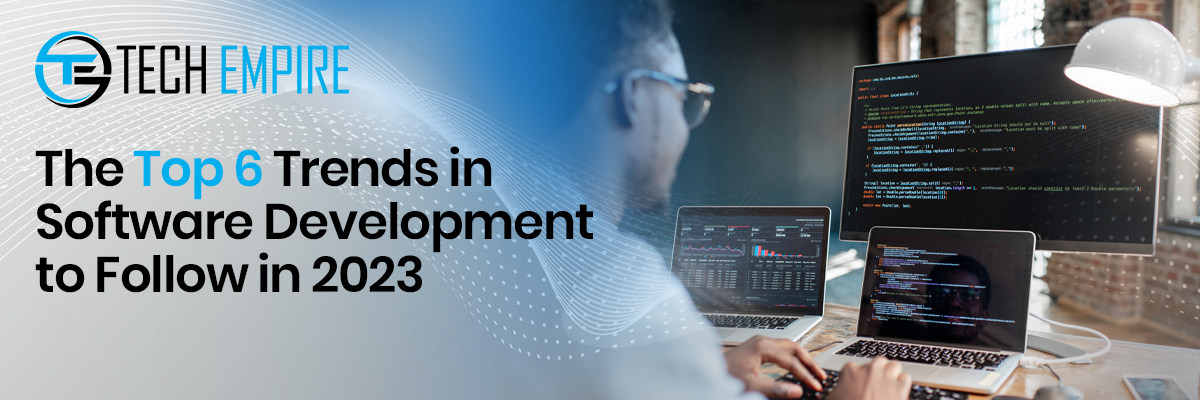The Top 6 Trends in Software Development to Follow in 2023
Business leaders have been forced to abruptly shift their focus away from post-pandemic growth and towards managing the threat of recession, the impact of persistent inflation, and the various crises in supply chains, energy sourcing, and the software development industry.
Organizations must identify and commit to strategic objectives and initiatives such as cost savings, margin improvement, rapid growth, or adopting new business models in this uncertain environment.
Technology and software development firms are critical components of this process. This article provides an overview of the top six software development trends that business leaders should know this year, regardless of their business objectives.
1. Blockchain Adoption
According to a software development company, blockchain is no longer a novel technology in software development. Automotive, agriculture, and logistics will quickly adopt this technology, and blockchain-based applications will skyrocket by 2023. With all transactions in your business, the technology provides top-tier security.
The characteristics of blockchain-oriented software systems, such as data replication, decentralized systems, public-key cryptography, and immutable transaction records, are propelling the technology’s adoption to new heights.
2. Evolution of Web 3.0
In contrast to Web 2.0, Web 3.0 aims to improve the user experience by incorporating technologies such as machine learning, AI, blockchain, etc. It also aims to give users more control over their data usage and visibility. Some of the most significant advantages of Web 3.0 are:
- Web 3 platforms will not be centralized. This means a single authority or database will not hold the data. It will rely on a global network to ensure that no single person or authority can disrupt Web 3. This feature will keep data from being hacked.
- Web 3 will pay users for the data they share with various platforms. This feature encourages users to share their data while also assisting businesses in being more transparent about their data policies.
- Web 3 will be highly beneficial to the insurance industry. Currently, the insurance industry is dealing with significant issues such as incomplete customer information, claim settlements, false claims, and so on.
- Web 3.0 is transparent and decentralized, which may aid in the reduction of false claims. Because Web 3 will allow peer-to-peer data sharing, the chances of data being hampered by middlemen or some authorities will be significantly reduced.
3. The Internet of Things (IoT)
The immediate rise of the Internet of Things (IoT) will be a critical technological development in 2023. Connecting sensors, gadgets, machinery, and automobiles have changed people’s lives.
IoT also offers several advantages to businesses, such as solutions for collecting large amounts of data, accelerating various operations, preventing equipment malfunction, conducting inventory management without losses, and saving operational expenses.
IoT devices include:
- Activity trackers.
- Automated self-healing systems.
- Anti-theft smart tags.
- Home security systems.
- Biometric cybersecurity scanners.
4. Low-Code Development
With solutions such as low-code/no-code development (LCNC), software engineering is quickly moving towards a streamlined approach to app development. Low code development is now at the heart of modern software development practices. It allows developers to build applications with minimal coding and allows anyone to program applications without needing expert linear coding.
This is made possible by LCNC’s visual drag-and-drop applications (graphical user interface) and similar tools. Because of LCNC, people without coding experience can quickly turn their ideas into applications. This makes low code development an affordable option for a new company that needs to prototype and test a business concept quickly.
5. Distributed Cloud Services
Distributed cloud services will be used by all software development firms shortly. These cloud-native solutions are profitable for development teams mainly because they enable remote work and contribute to the growth of the software industry.
Companies can use a distributed cloud topology instead of putting backend services on a single cloud server because these are hosted by multiple cloud providers and in different geographical regions, resulting in little to no downtime error.
The most well-known examples of apps that use distributed cloud services are Netflix and YouTube.
6. Sustainable Technology
Last but not least, we are witnessing a growing awareness of the negative aspects of technological advancement outside of the software development industry. This understanding is not novel in and of itself; the debate over the adverse effects of technology began a few years ago.
It’s a broad topic ranging from technology’s environmental impact to psychological risks and how it affects our social, educational, and work lives. Articles on digital detox remind us of these negative aspects and offer advice on dealing with some of them, particularly concerning our health.
The sustainable approach to technology aims to improve IT services by increasing energy and material efficiency, promoting enterprise sustainability through traceability, analytics, and renewable energy, and assisting customers in becoming more environmentally friendly through applications, software, and marketplaces.
The Takeaway
To summarize, as we navigate the challenges posed by economic uncertainty, inflation, and supply chain crises, software development is an important component of organizations’ strategic initiatives. The top six software development trends in 2023 provide promising opportunities for companies to adapt and thrive in this volatile landscape.

